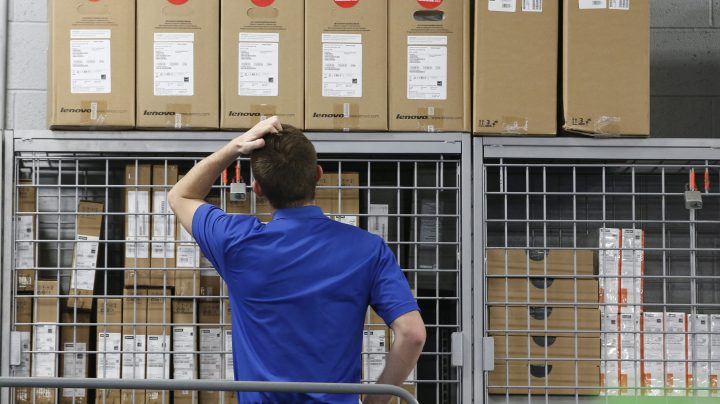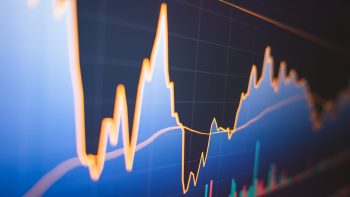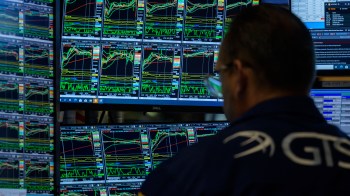
Are the latest GDP numbers good news? It depends on how you look at them.
Are the latest GDP numbers good news? It depends on how you look at them.

As we at Marketplace have said before, this economy is really hard to read right now. The latest evidence for that came Thursday morning in the form of the Commerce Department’s quarterly report on the country’s gross domestic product.
At first blush, the news looks pretty good: The economy grew by 2.9% in the last three months of 2022, which was more than most economists were expecting.
But it’s also less growth than we saw in the third quarter of last year, and there are signs that at least parts of the economy are slowing down. Just look at construction and home sales. Plus, retail sales have been falling for a couple months now.
So, while recognizing the fundamental axiom of economics — that there’s always “another hand” — we asked two reporters to interview the same economists and show both sides of the same GDP coin.
A rosy view of GDP
“You know, this is pretty good stuff. We got a very resilient set of growth numbers,” said Joe Brusuelas at RSM Consulting. “For the overall year, the economy expanded at 2.1%, despite a very challenging growth picture, where an economy is absorbing the twin shocks of inflation and interest rates.”
Those rising borrowing costs for mortgages, credit cards and business loans barely seem to have dented economic activity, said Megan Greene at the Kroll Institute.
“The headline figure surprised on the upside at 2.9% for the fourth quarter. It’s just the details were a little bit more disappointing,” she said.
Don’t worry, we’ll get to the disappointment shortly. Back to the upside: “The good news is consumption was still fairly strong for both goods and services,” Greene said.
Spending by businesses also held up pretty well, according to Capital Economics’ Andrew Hunter.
“Business investment overall increased 0.7% annualized,” he said. “In the context of the huge rise in interest rates we’ve had, that is reasonably encouraging.”
One big boost to economic activity came from an increase in business inventories.
“We saw inventories add essentially almost half the headline gain,” said economist Sarah House at Wells Fargo. “Whether that’s a good thing or a bad thing — inventories are a little bit in the eyes of the beholder.”
And that brings us to the negative side of things.
A cloudy version of GDP
When you ask those same economists to look for indicators to worry about in the GDP report, there’s no shortage of examples.
Let’s start with the buildup in inventories that happened last quarter. We shouldn’t get too excited about that, said RSM’s Brusuelas.
“That makes sense ahead of the holidays,” he said. “That’s a one-time thing and not going to be replicable.”
And while the inventory buildup could be a sign that businesses were feeling confident, “it could also mean that businesses have been caught off guard by the demand environment, and so they’ve had unintended inventory building,” said House of Wells Fargo.
Demand has been weakening. Another sign of souring is that imports to the United States were down.
“With imports falling, it’s a sign that businesses have restocked their inventories sufficiently and that they see fading signs of consumer demand where they just don’t need as much product,” House said.
Even though consumer spending did rise last quarter, more recent retail sales data found that spending fell in both November and December.
“Although the quarter as a whole was OK, the degree of momentum and strength was fading as the quarter went on,” added Hunter of Capital Economics.
Consumer spending had been propped up by all the relief aid people got during the pandemic, but Greene at the Kroll Institute pointed to the fact that people have been burning through their savings.
“The question is how long can they whittle that down before they run out, and I think they’ll probably run out at some point this year,” she said, adding that if consumer spending keeps falling, more companies might lay off workers.
When asked about whether he thinks the economy will enter a recession this year, Brusuelas responded: “We think there’s a 65% probability of a recession, most likely starting around midyear. That means there’s a 35% probability that we won’t.”
Is that a good sign or a bad one? Guess it depends on what you think of those odds.
There’s a lot happening in the world. Through it all, Marketplace is here for you.
You rely on Marketplace to break down the world’s events and tell you how it affects you in a fact-based, approachable way. We rely on your financial support to keep making that possible.
Your donation today powers the independent journalism that you rely on. For just $5/month, you can help sustain Marketplace so we can keep reporting on the things that matter to you.

















